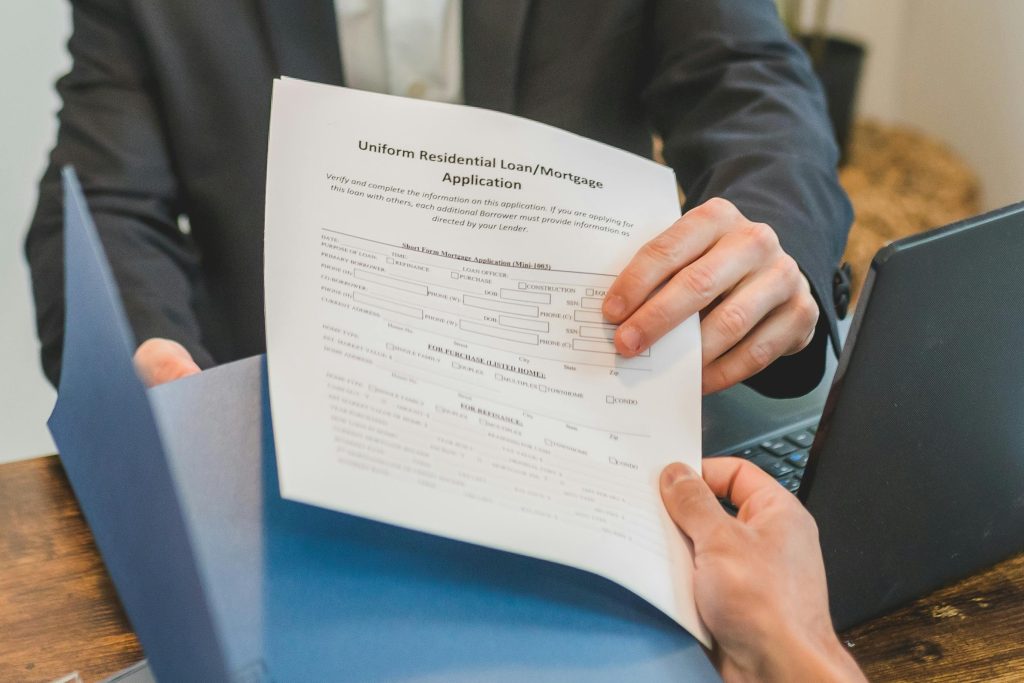Introduction
Studying abroad is a life-changing adventure—expanding your academic horizons, cultural understanding, and professional network. Yet before you book flights or pack suitcases, you must navigate the student-visa application process. At its core, this process hinges on one thing: submitting the right documents in the correct format. Missing paperwork or inconsistencies can derail your plans, causing delays or outright denial. In this detailed guide, we’ll walk through every document you need—general requirements that apply worldwide and country‑specific nuances for top study destinations. Along the way, we’ll share practical tips, real‑world examples, and best practices so you can prepare a rock‑solid application and focus on what matters most: your studies.
1. Universal Document Checklist
While each country’s embassy or consulate may have its own forms, most student‑visa applications require the following core items:
1.1 Valid Passport

- Expiration: Valid for at least six months beyond your intended stay.
- Blank Pages: Minimum two consecutive blank visa pages.
- Copy Requirements: Submit a clear color copy of the data page (name, photo, passport number) and any pages with existing visas or entry stamps.
Pro Tip: If your passport is set to expire within a year, renew it before starting visa paperwork to avoid disruptions.
1.2 Proof of Admission
- Official Acceptance Letter: On institution letterhead, signed by an authorized admissions officer.
- Program Details: Must state program name, start/end dates, and enrollment status (full‑time).
- Conditional vs. Unconditional Offers: Some embassies accept conditional offers pending final transcripts—check guidelines carefully.
1.3 Financial Evidence
You must demonstrate you can afford tuition, living expenses, and return travel without unlawful work.
- Bank Statements: Recent 3–6 months showing minimum balance thresholds (varies by country).
- Scholarship Letters: Official award notification, detailing values and duration.
- Sponsor Documents: Letter of support plus sponsor’s bank statements, income tax returns, employment letters.
- Loan Sanctions: Copy of bank’s sanctioned loan letter, if financing through educational loans.
Case Study: For a UK Tier 4 visa, you must show £1,333 per month of study plus one month’s funds, multiplied by program length (capped at 9 months).
1.4 Academic Records
- Transcripts: Official transcripts from high school or prior university, with grading scale explained.
- Degree Certificates: Scanned copies of diplomas or provisional certificates.
- Certified Translations: If documents are not in the host‑country language, supply translations endorsed by a certified translator.
1.5 Language Proficiency
Most programs require proof of proficiency in the language of instruction:
- English Tests: IELTS, TOEFL, PTE Academic, Duolingo English Test.
- Other Languages: TEF/TCF for French, DELE for Spanish, TestDaF for German.
- Waivers: Some institutions waive testing for native speakers or prior instruction in English.
1.6 Passport‑Size Photographs
- Specifications: Typically 35 × 45 mm (UK), 2″ × 2″ (US), white background, neutral expression.
- Quantity: Varies—usually 2–4 photos.
- Name/Reference: Print your name and visa-application number lightly on the back.
2. Supplemental Documentation by Visa Type
Different countries add unique requirements. Below are the main variations for four popular destinations.

2.1 United States (F‑1 Visa)
| Document | Details |
|---|---|
| Form I‑20 | Issued by SEVP‑certified school; includes SEVIS number. |
| DS‑160 Confirmation Page | Online Non‑immigrant Visa Application; print bar‑coded page. |
| SEVIS I‑901 Fee Receipt | Proof of $350 payment to SEVIS; required before scheduling interview. |
| Visa Appointment Confirmation | Print email with interview date/time/location. |
| Transcript Evaluations | If credentials differ from U.S. system, obtain WES or equivalent. |
| Proof of Ties | Documents demonstrating intent to return home (property deeds, family ties, job offers). |
2.2 United Kingdom (Student Visa)
| Document | Details |
|---|---|
| CAS Number & Certificate of Acceptance | Issued by sponsoring institution; includes tuition/bursary details. |
| TB Test Certificate | Required for studies over 6 months if from a listed country. |
| ATAS Certificate | Academic Technology Approval Scheme for certain STEM courses. |
| Maintenance Funds | Bank statements or loan confirmation showing required funds. |
2.3 Canada (Study Permit)
| Document | Details |
|---|---|
| Letter of Introduction | Confirms study‑permit approval; not the permit itself. |
| Biometrics | Fingerprints and photo—typically required unless previously given. |
| Custodianship Declaration | For minors under 18—legal guardian documentation. |
| Language Proficiency | IELTS, CELPIP, or equivalents for English; TEF for French. |
2.4 Australia (Subclass 500 Visa)
| Document | Details |
|---|---|
| Confirmation of Enrolment (CoE) | Issued by the institution via PRISMS system. |
| Genuine Temporary Entrant (GTE) | Personal statement demonstrating intent to study temporarily. |
| Overseas Student Health Cover (OSHC) | Proof of insurance for the visa’s duration. |
| Character Certificate | Police clearance from each country you’ve lived in >12 months. |
3. Deep Dive: Preparing Each Document
3.1 Crafting a Strong Statement of Purpose (SOP)
Although not always mandatory, an SOP or Letter of Intent can strengthen your application:
- Structure:
- Introduction: Your background and passion for the field.
- Academic & Professional Journey: Key achievements and skills.
- Study Objectives: Why this program/institution, and how it aligns with your goals.
- Career Vision: Post‑graduation plans and contribution to home country or global community.
- Length: 700–1,000 words.
- Tone: Professional yet personal—demonstrate self‑awareness and genuine motivation.
3.2 Organizing Financial Evidence
- Calculation Worksheet: Prepare a breakdown of tuition, living costs, and contingencies.
- Consistency: Sponsorship letters and bank statements must align in amounts and dates.
- Additional Sources: Include fixed deposits, scholarship stipends, and education loan letters.
3.3 Translating and Notarizing Records
- Translator Credentials: Use translators certified by relevant government or academic bodies.
- Notarization: Some embassies require notarized translations; check local guidelines.
- Document Bundling: Staple original language document and translation together, then scan/photograph as a single file.

4. Common Pitfalls and How to Avoid Them
| Pitfall | Prevention Strategy |
|---|---|
| Expired or Nearly Expired Passport | Renew passport at least 9–12 months before planned travel. |
| Insufficient Financial Proof | Include multiple fund sources; err on the side of excess. |
| Mismatched Names or Dates | Ensure consistency across all forms—use legal name only. |
| Poor‑Quality Scans or Photos | Use a high‑resolution scanner; avoid shadows or glare. |
| Overlooked Country‑Specific Requirements | Download the embassy’s checklist; verify with an education agent or visa consultant. |
5. Application Submission and Interview Preparation
5.1 Online vs. Paper Applications
- Digital Uploads: Many countries (e.g., Canada, Australia) use online portals—upload PDFs in prescribed formats.
- In‑Person Submission: Some embassies require physical submission—prepare two copies of each document in clear plastic sleeves.
5.2 Scheduling and Attending the Visa Interview
- Booking: As soon as you have Form I‑20, CAS, or CoE—slots fill quickly, especially in summer.
- Practice Common Questions:
- Why did you choose this country/university?
- How will you fund your studies?
- What are your plans after graduation?
- Dress & Etiquette: Business casual attire; arrive 15–20 minutes early with all originals neatly organized.
6. After Submission: Monitoring and Follow‑Up
- Processing Timelines: Vary widely—anywhere from 2 weeks (Canada) to several months (UK, Australia peak season).
- Tracking: Some embassies provide online status updates; others require email or phone inquiries.
- Additional Documentation Requests: Respond promptly and fully—delays here can push back visa issuance.

Conclusion
A successful student‑visa application is built on meticulous document preparation and attention to detail. By assembling a complete, well‑organized portfolio—valid passport, proof of admission, financial evidence, academic transcripts, language test scores, and country‑specific forms—you signal to visa officers that you are a credible, prepared candidate. Start early, verify each embassy’s checklist, and leverage tools like document‑tracking spreadsheets to stay on top of deadlines. With these strategies, you’ll minimize the risk of delays or denials and set the stage for a smooth transition to life as an international student.
